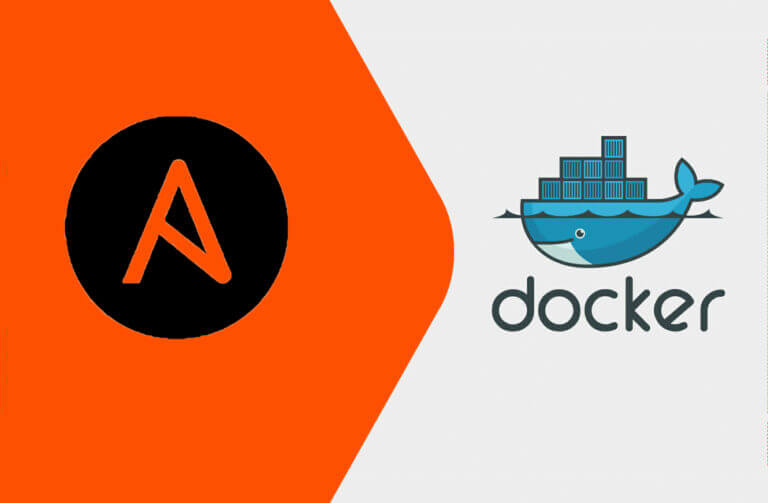Summary
Two popular tools used in software engineering to manage containers are Kubernetes and OpenShift. Kubernetes was originally developed by Google and provides the foundation for container orchestration, while OpenShift is a container platform developed by Red Hat.
Containerization is the technique of making software into simple, self-contained units. As it becomes widespread in software engineering, so does the need to manage these containers. Kubernetes and OpenShift are two popular tools that are often used to achieve this.
In this article, we’ll explore the functionalities of these two leading container orchestration tools and compare their features to help you understand and guide your choice for managing your containerized applications.
What Is Kubernetes?
Kubernetes, often abbreviated as K8s, is an open source container orchestration platform that automates the deployment, scaling, and management of containerized applications. Originally developed by Google and later donated to the Cloud Native Computing Foundation (CNCF), Kubernetes has become the standard tool for container orchestration in cloud-native environments.
Kubernetes automates the management of containerized applications across clusters of hosts by abstracting away the underlying infrastructure complexities, providing a unified platform for controlling the workloads.
Here are some of the key features and benefits Kubernetes offers:
- Container orchestration: Kubernetes coordinates the scheduling and placement of containers across a cluster of nodes, ensuring that applications run reliably and efficiently.
- Autoscaling: Kubernetes can automatically scale applications based on predefined metrics, such as CPU utilization or custom metrics. This allows engineering teams to optimize resource utilization and handle fluctuations in workload demand.
- Service discovery and load balancing: Kubernetes provides built-in mechanisms for service discovery, allowing applications to easily communicate with each other within the cluster. It also offers built-in load balancing to distribute incoming traffic across application instances, ensuring optimal performance and high availability.
- Self-healing: Kubernetes continuously monitors the health of application components and automatically restarts or replaces containers that fail, ensuring the system’s reliability and availability.
- Declarative configuration: Kubernetes allows users to define the desired state of their applications using declarative configuration files, leaving the platform to handle the implementation details. This simplifies the management of complex application environments and ensures consistency across deployments.
- Extensibility: Kubernetes has a rich ecosystem of plugins, extensions, and APIs that allow users to customize and extend the platform to suit their specific requirements. This extensibility enables integration with third-party tools and services, enhancing Kubernetes’ functionality and versatility.
What Is OpenShift?
While Kubernetes provides the foundation for container orchestration, OpenShift builds upon this foundation to offer a comprehensive container solution. OpenShift is a container platform developed by Red Hat, designed to streamline the development, deployment, and management of containerized applications. OpenShift extends beyond Kubernetes by providing a more integrated and user-friendly experience for developers, operators, and administrators.
OpenShift enhances Kubernetes with a suite of additional features and tools, including:
- Integrated CI/CD pipelines: OpenShift comes with built-in continuous integration and continuous delivery (CI/CD) pipelines. These pipelines simplify and automate the process of building, testing, and deploying applications.
- Developer-friendly workflows: OpenShift provides an intuitive web console and developer tools that make it easier for developers to build, deploy, and manage applications. With pre-configured templates, streamlined workflows, and built-in monitoring capabilities, OpenShift empowers developers to focus on writing code rather than managing infrastructure.
- Enhanced security: OpenShift incorporates robust security measures such as role-based access control (RBAC), network policies, and image scanning, ensuring the confidentiality, integrity, and availability of applications and data.
- Enterprise support: OpenShift is backed by Red Hat’s extensive support network, which offers enterprise-grade support, training, and consulting services. This ensures organizations receive timely assistance and expert guidance in deploying and managing OpenShift clusters at scale.
Kubernetes vs. OpenShift: Feature Comparison
Now that we have a foundational understanding of Kubernetes and OpenShift, let’s compare their core features in detail. While both platforms share common roots in container orchestration, they diverge in terms of functionality, ease of use, and enterprise capabilities. Let’s have a closer look at their differences:
Core Features
The core features of Kubernetes include:
- Container orchestration
- Autoscaling
- Service discovery
- Health checking and self-healing
- Extensibility
Built on top of Kubernetes, OpenShift’s core features include:
- Integrated CI/CD pipelines
- Developer-friendly workflows
- Built-in monitoring and logging
- Enhanced security
- Enterprise support
Deployment and Management
Kubernetes requires users to manually configure various deployment and management aspects, including networking, storage, and security policies, which may pose a steep learning curve for beginners.
It’s primarily managed through the kubectl command-line interface (CLI), which provides fine-grained control over cluster operations but may require a deep understanding of Kubernetes concepts and syntax.
OpenShift simplifies deployment and management tasks through its intuitive web console and developer-friendly workflows, allowing users to deploy applications with just a few clicks.
Scalability and Performance
Kubernetes offers flexible scaling options, allowing users to scale their applications both vertically (resizing individual pods) and horizontally (adding or removing pods), depending on workload demands. It also employs built-in load-balancing mechanisms to distribute incoming traffic across application instances, ensuring optimal performance and high availability.
OpenShift is optimized for enterprise workloads, offering enhanced performance and reliability features such as optimized scheduling, resource quotas, and priority classes, ensuring consistent performance under heavy workloads. It supports horizontal autoscaling, allowing users to automatically scale their applications based on metrics such as CPU or memory utilization, ensuring efficient resource utilization and responsiveness.
Ecosystem and Community Support
The Kubernetes community is one of the largest and most active open source communities in the world, comprising developers, contributors, and users from diverse backgrounds and organizations. The community provides extensive support, resources, and collaboration opportunities for Kubernetes users. The ecosystem has many tools that cater to different aspects like container runtimes, networking and storage solutions, CI/CD, and monitoring and logging tools.
OpenShift benefits from its integration with the broader Red Hat ecosystem, offering seamless interoperability with other Red Hat products and services. This means that OpenShift users can access a wide range of certified solutions and services from Red Hat partners, including technology vendors, independent software vendors (ISVs), and system integrators. This ecosystem provides users with additional tools, integrations, and support options to enhance their OpenShift deployments.
Kubernetes vs. OpenShift: Use Cases and Industry Adoption
Kubernetes and OpenShift are widely adopted across various industries, each serving unique use cases. Let’s explore some of the common use cases for both tools.
Common Use Cases for Kubernetes
Industry leaders like Google, Netflix, and Spotify have embraced Kubernetes for its power and flexibility to orchestrate their massive containerized deployments. Likewise, healthcare organizations, financial institutions like JPMorgan Chase and Wells Fargo, and other companies across various sectors also leverage Kubernetes. Some of the workload scenarios where it’s been used include:
- Microservices architecture: Kubernetes is ideally suited for managing complex applications built using a microservices architecture. It facilitates the independent deployment, scaling, and management of these microservices, leading to a more agile and scalable development process.
- Cloud-native applications: Cloud-native applications are designed to leverage the benefits of cloud computing. Kubernetes seamlessly integrates with various cloud platforms, enabling efficient deployment and management of cloud-native applications across hybrid or multi-cloud environments.
- Machine learning and AI: The ability to scale resources efficiently makes Kubernetes perfect for deploying and managing machine learning and AI workloads. Organizations can leverage Kubernetes to orchestrate training jobs, manage model deployments, and scale compute resources as needed.
- High-performance computing (HPC): HPC environments require complex orchestration of compute resources. Kubernetes’ scalability and ability to handle demanding workloads make it suitable for managing HPC and edge computing applications in scientific research, engineering simulations, and other computationally intensive tasks.
Common Use Cases for OpenShift
OpenShift, built upon the foundation of Kubernetes, caters to use cases where a user-friendly, secure, and development-centric platform is paramount. Companies like Verizon and AT&T and manufacturing giants like BMW and Siemens are utilizing OpenShift to build and deploy next-generation network functions and communication services. Here are some use cases where it’s preferred:
- Continuous integration and delivery (CI/CD): OpenShift’s built-in CI/CD pipelines streamline the development workflow, enabling developers to push code changes and deploy applications faster.
- Enterprise containerization: Large organizations with complex IT environments benefit from OpenShift’s built-in security features, standardized workflows, and enterprise-grade support offered by Red Hat.
- DevOps workflows: OpenShift integrates seamlessly with popular DevOps tools, fostering a collaborative development environment and accelerating application delivery cycles.
Conclusion
The choice between Kubernetes and OpenShift depends on your specific needs and priorities. Kubernetes offers unmatched flexibility and control, making it ideal for experienced users seeking a customizable solution. On the other hand, OpenShift provides a user-friendly and secure platform built on Kubernetes, which makes it suitable for organizations seeking a faster path to containerized application delivery.
Whichever one you choose, it’s imperative to pair it with a data storage solution like Portworx® designed for containerized environments. This will provide persistent storage optimized for both Kubernetes and Red Hat OpenShift deployments.






